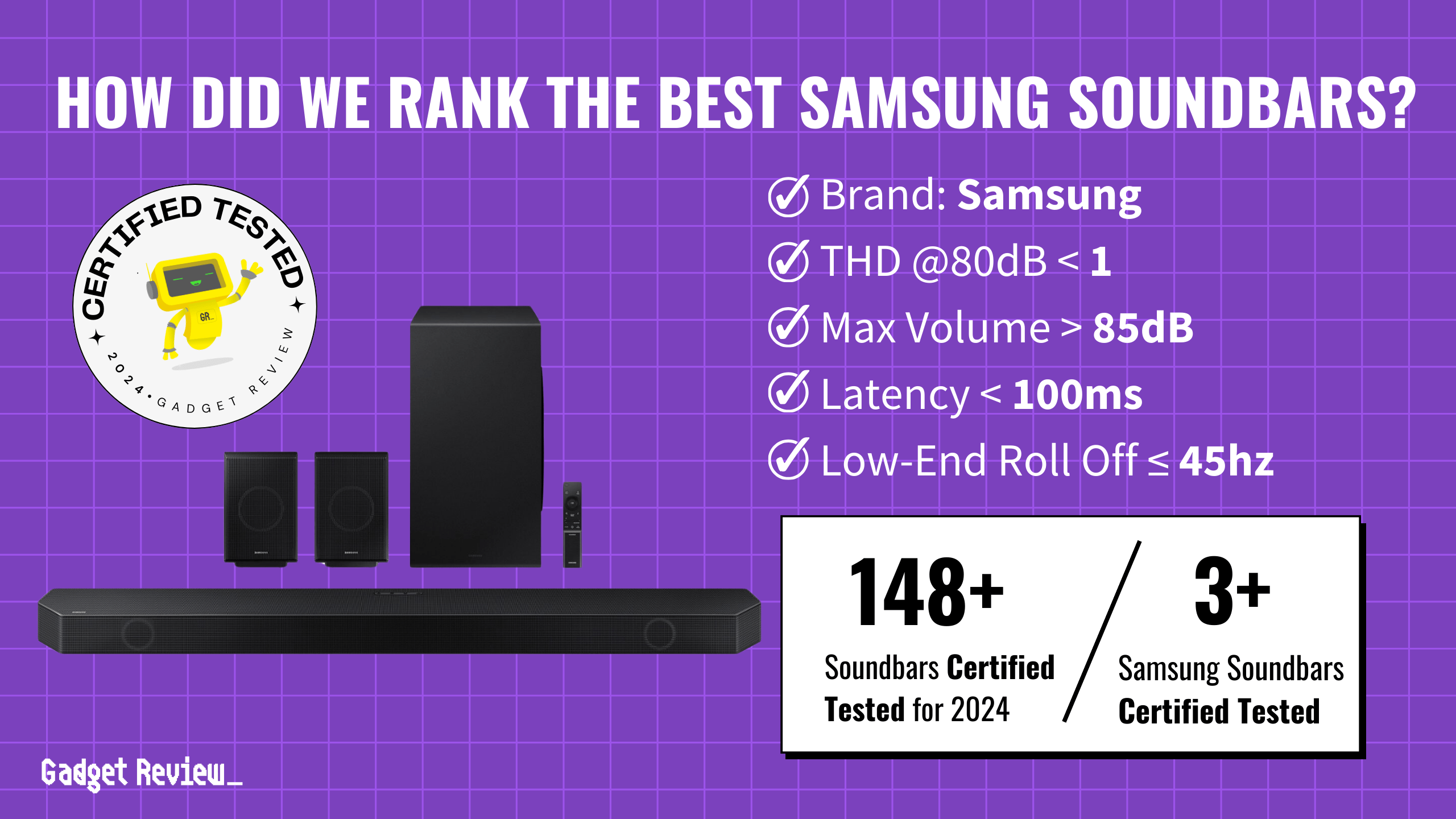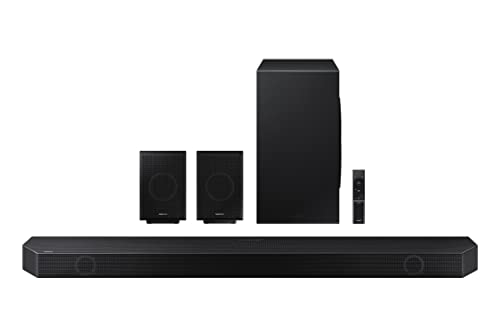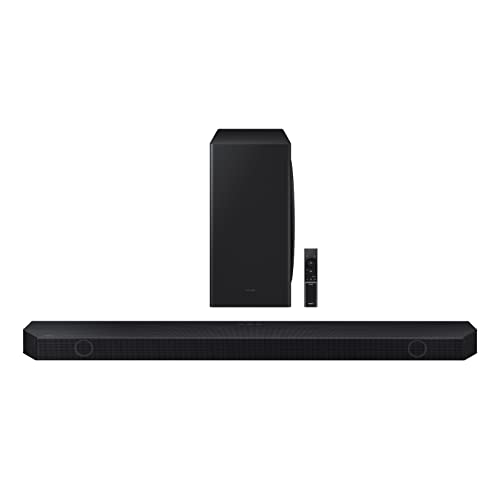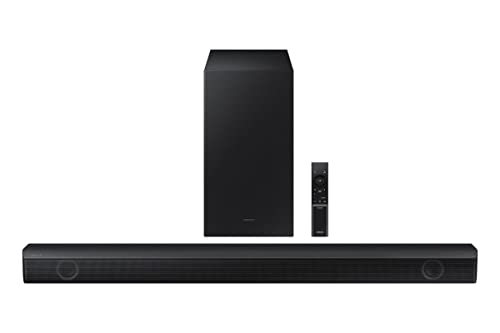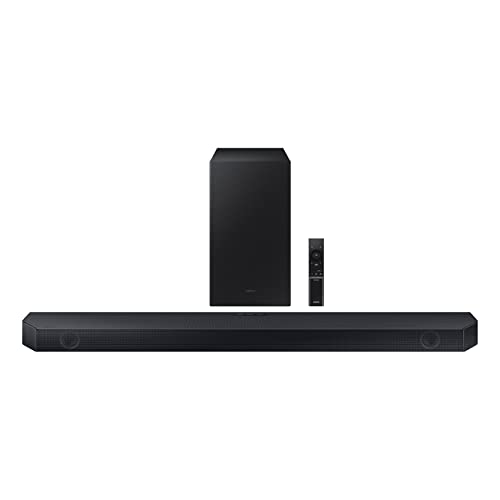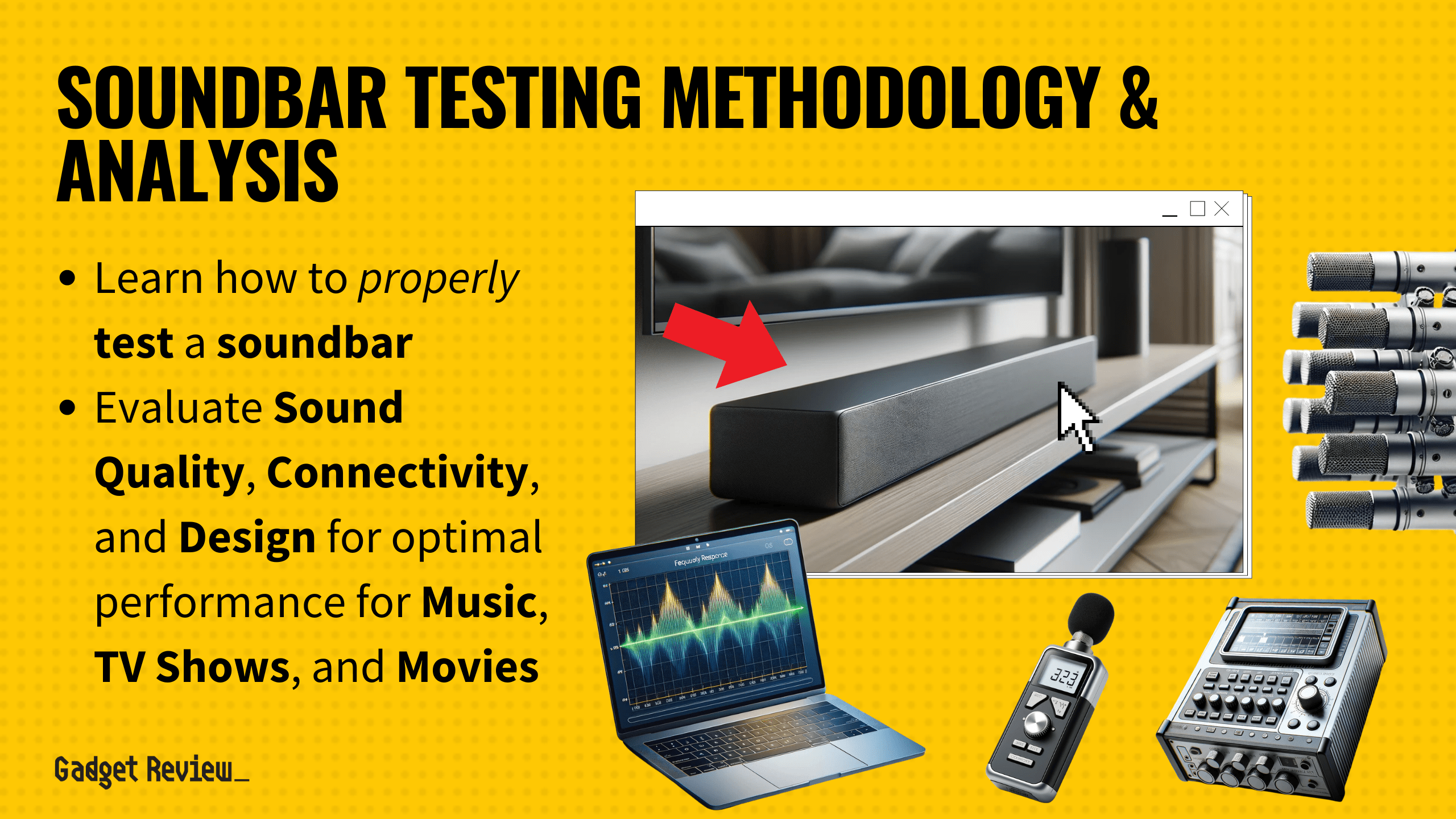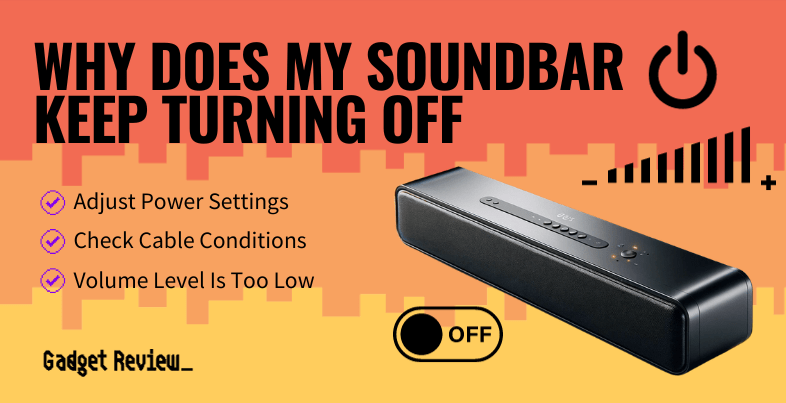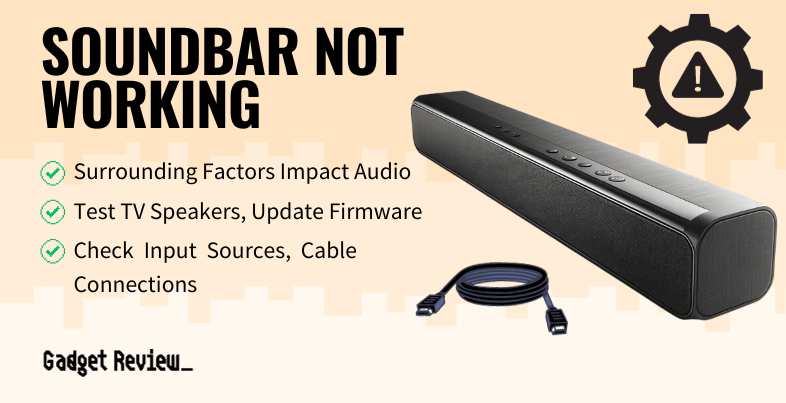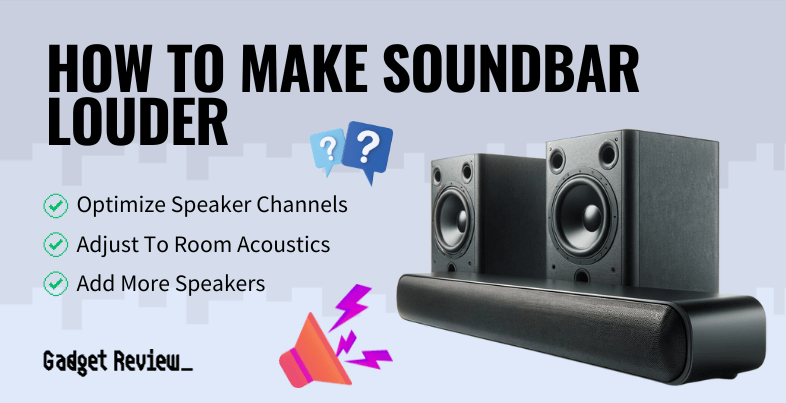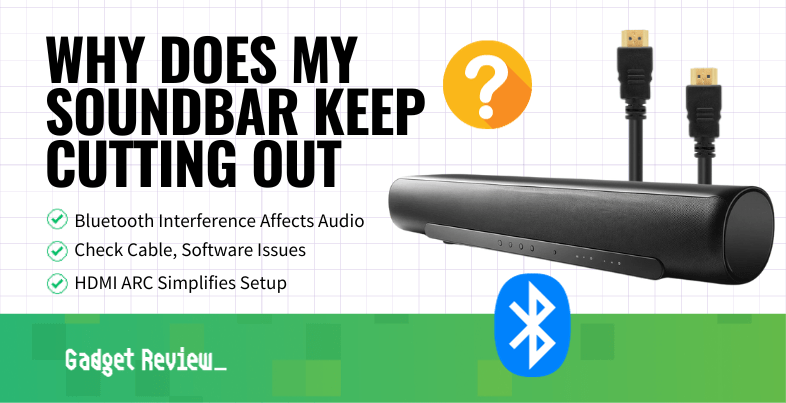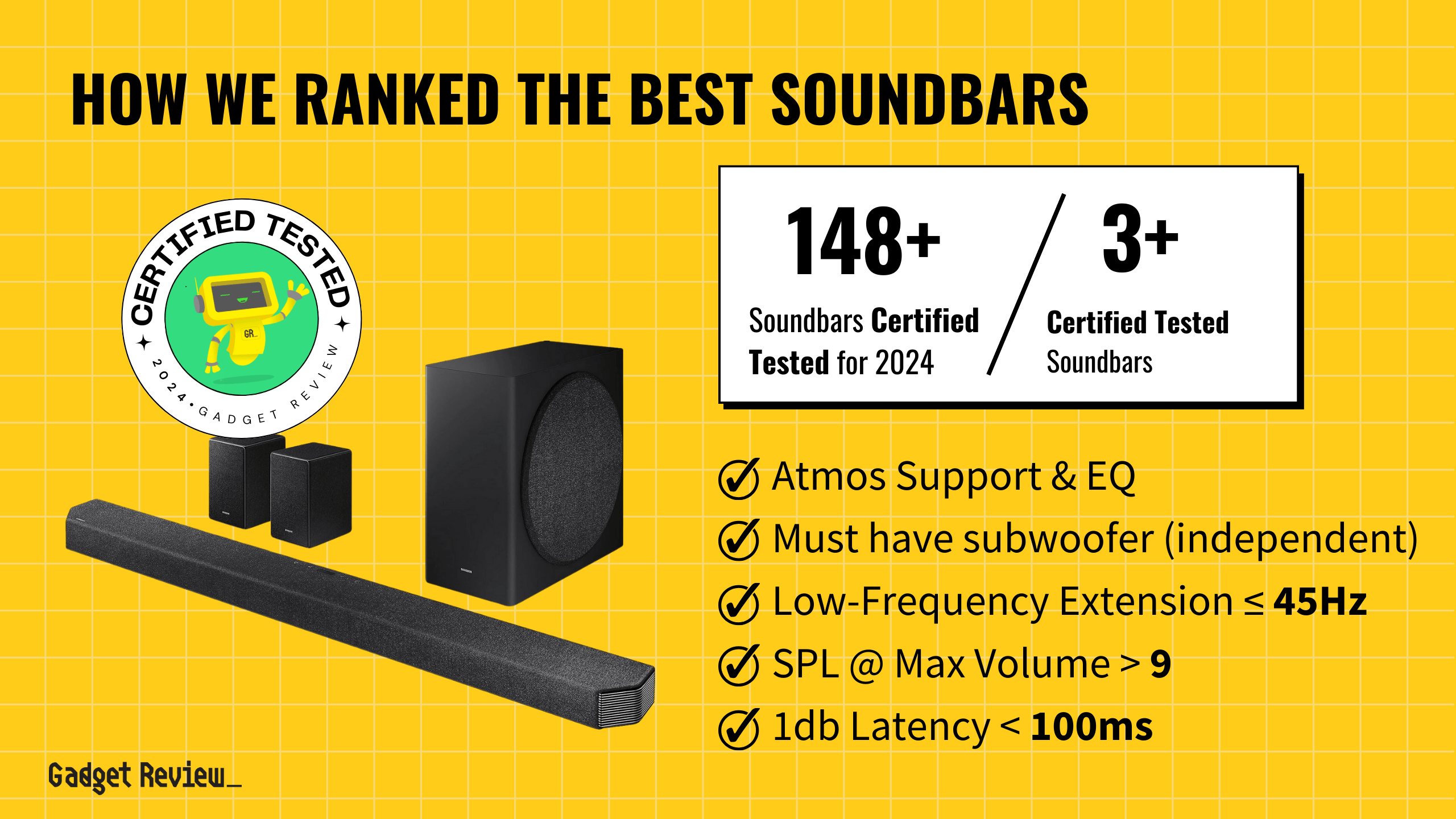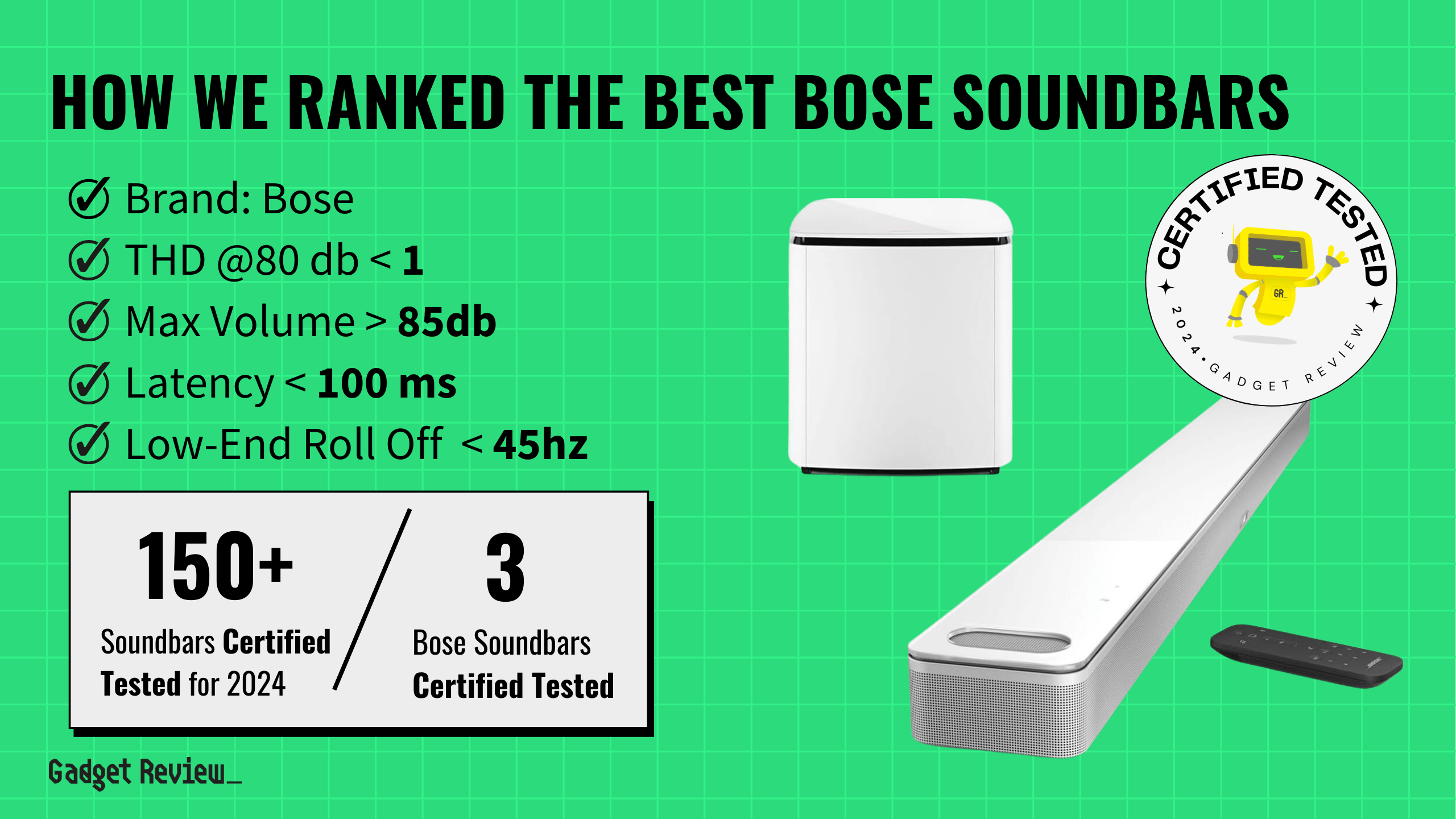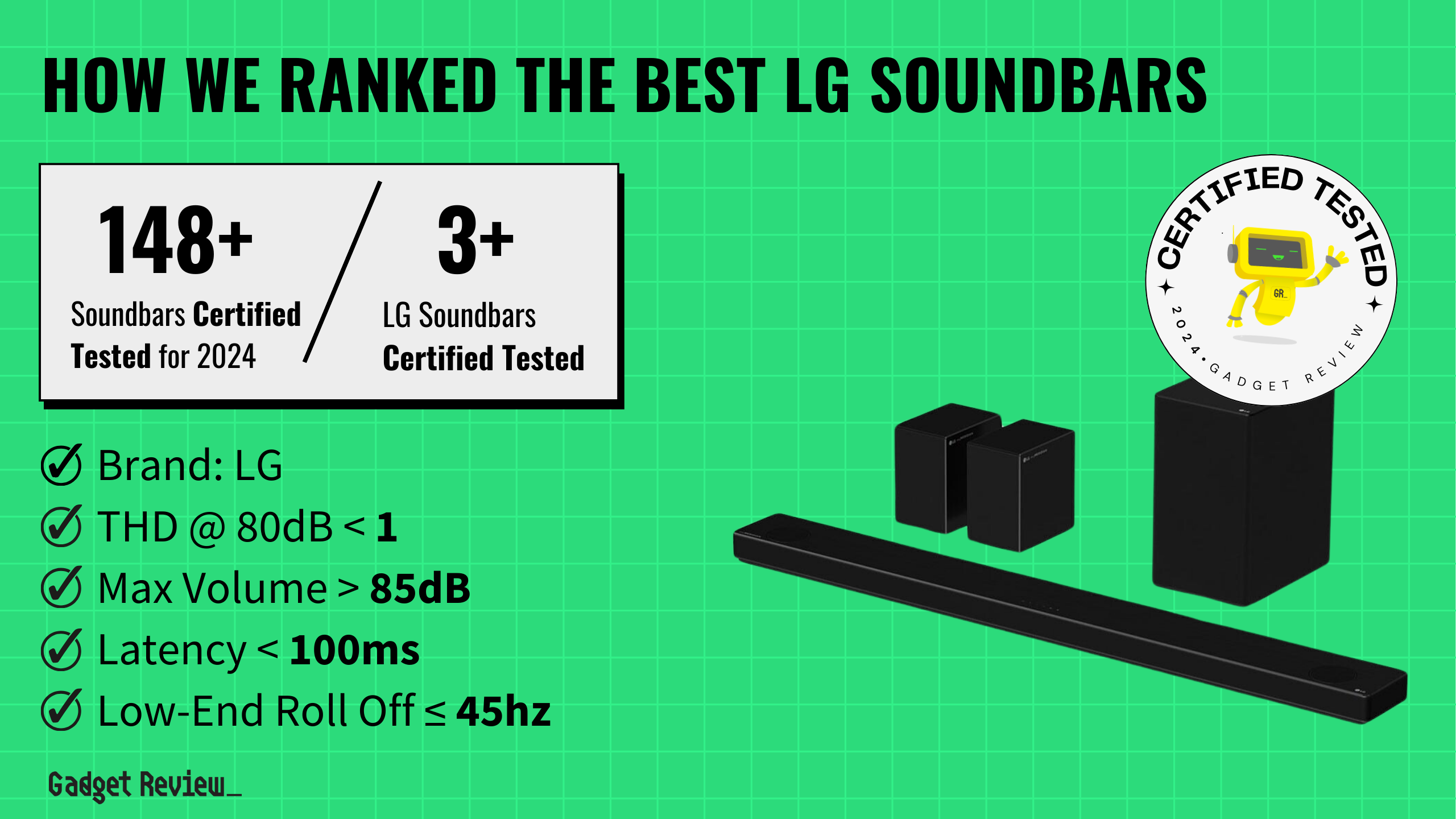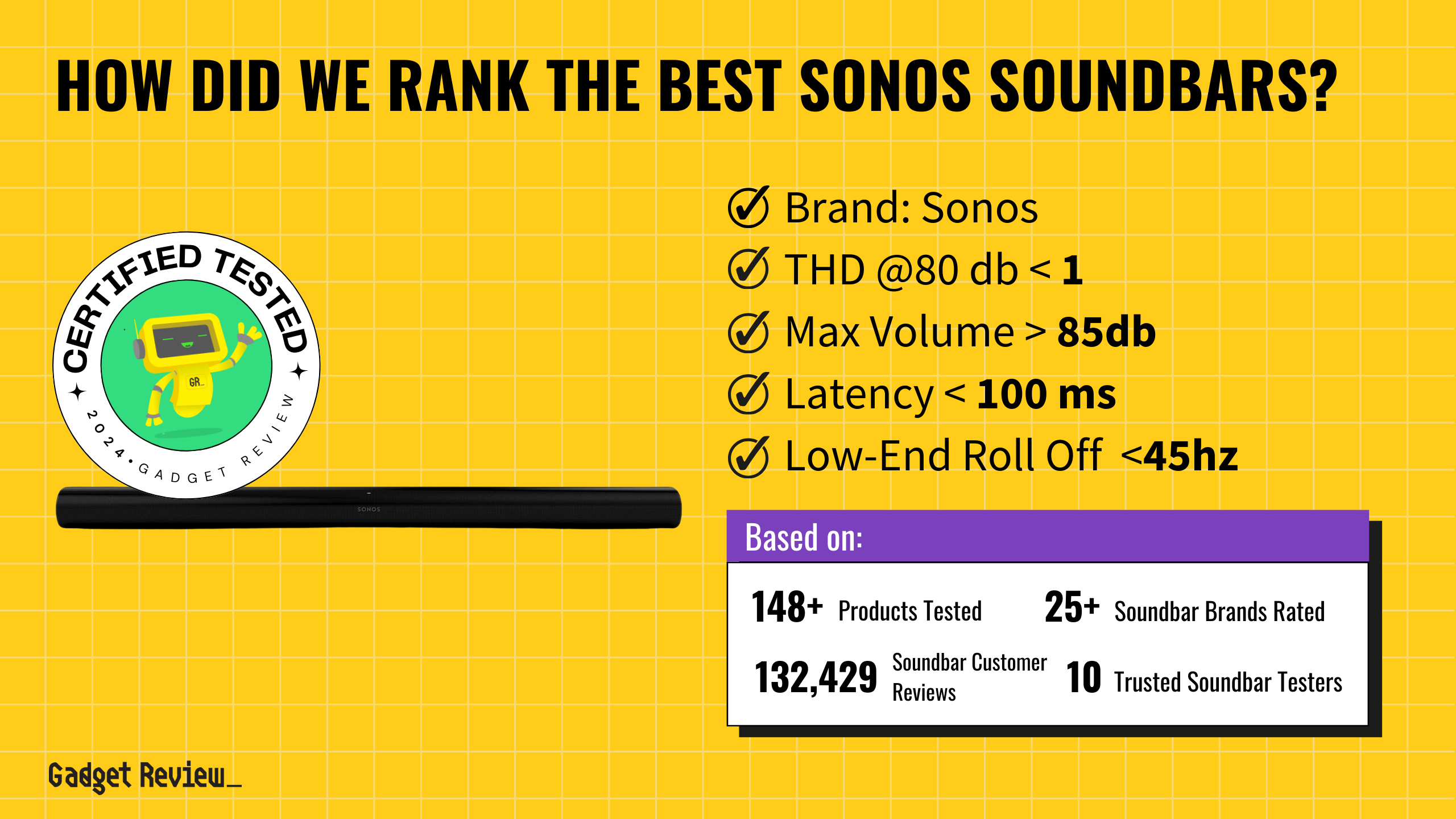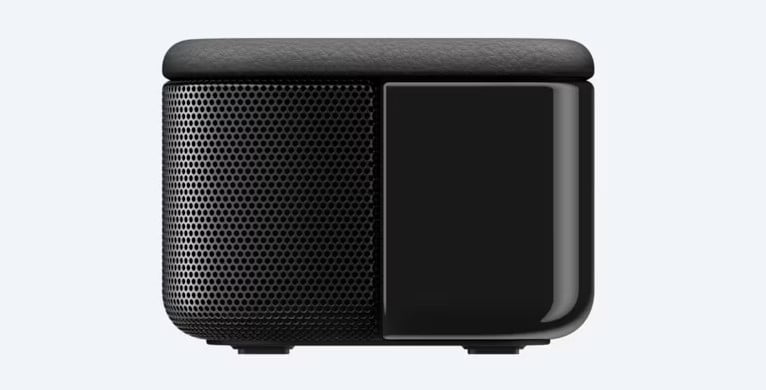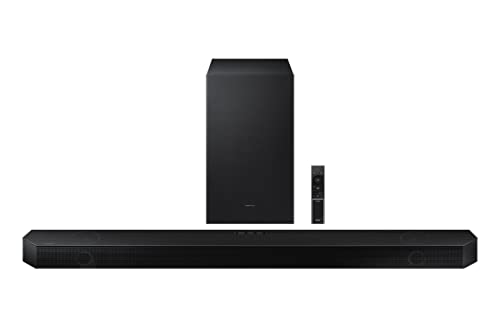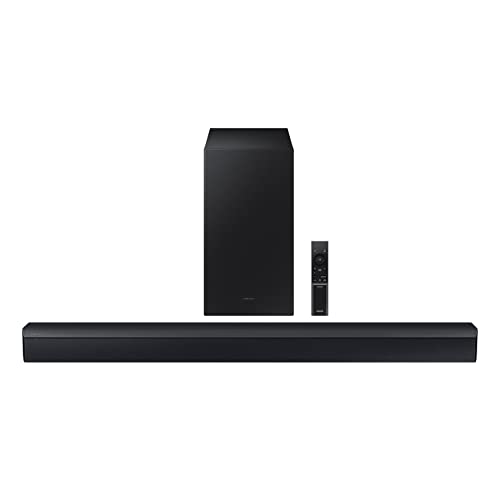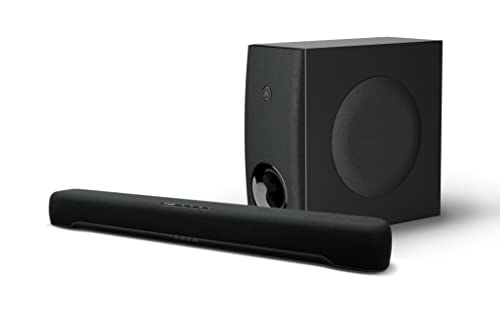Choosing the best Samsung soundbar means focusing on sound quality and customization features. Samsung soundbars stand out for their balanced audio, robust build, and the ability to adjust sound settings with a graphic EQ. These qualities make them versatile for various media types, including movies and music. However, potential issues like high latency or connectivity problems could affect your experience.
We certified over 140 soundbars as tested and selected 4 as top picks after analyzing 404,512 reviews. To find the best soundbars, we considered numerous expert opinions and user feedback. An astounding 92% of experts proved unreliable. Our approach filters fake reviews and verifies tested products, ensuring the most accurate recommendations. The Samsung soundbars that made our list performed exceptionally well, providing high-quality, customizable sound.
How Did We Rank the Best Samsung Soundbars?
Our extensive research, spanning over 200 websites, allowed us to pinpoint the best Samsung soundbar by evaluating testing methodologies, expert reviews, and customer experiences. By using our True Score system, we’ve identified 2 necessary tests, 2 beneficial features, and 1 mandatory specification, ensuring you get a soundbar that meets the highest standards. When you shop through our links, you’re backing our mission. Dive deeper to see how.
?️ Minimum Specifications
- Must be Samsung
? Test Criteria
- Total Harmonic Distortion: A total harmonic distortion (THD) below 1% at 80 decibels to guarantee high-fidelity audio reproduction without unwanted frequencies.
- Volume Output: The soundbar should be able to deliver a powerful and immersive sound performance, exceeding 85 decibels in volume output.
? “Nice To Haves”
- Latency: With a latency under 100 milliseconds, it ensures minimal delay in data transmission or audio processing.
- Low-End Roll Off: A low-end roll-off of <45 Hz to ensure there is plenty of thump and rumble in the bass to enhance your music or movie-watching experience.
Latest Updates
- 04/10/2024: Published the list of best Samsung soundbars based on our True Score system.
Top Samsung Soundbars For 2025
Prices accurate at the time of publishing
To secure a spot on our list, a Samsung soundbar must meet our criteria for audio performance and quality. If it doesn’t meet these standards, it won’t be featured!
Which Criteria Matters for Testing Best Samsung Soundbars?
By focusing on these criteria (2 required, 2 nice to have), anyone can quickly and easily compare these soundbars and how they’ll perform. This helps you make an informed decision and purchase a soundbar that will sound great.
| CRITERIA | RANGE | REQUIRED | DEFINITION |
|---|---|---|---|
| Total Harmonic Distortion | < 1 | Yes | The amount of distortion introduced by the soundbar when it processes an audio signal at a given volume (typically 80, 85 or maximum dB output.) |
| Max Volume | > 85 dB | Yes | The maximum volume that a soundbar reaches when it’s output it turned up to 100%. |
| Low End Roll Off | < 45 Hz | No (nice to have) | The point at which bass begins to sharply fall below the target response point on a frequency response graph, making harder to hear. |
| Latency | < 100 ms | No (nice to have) | The time it takes for a soundbar to process audio signal from a source and output it through the speakers. |
Our Trusted Data Sources
(Publication category Score is 80%+)
We looked at 120+ soundbar reviewers and while 10 are trustworthy (60%+ Trust Rating), we only use data from the testers that are “very trusted” which means a Trust Rating above 70%. The three we have listed below are our most trusted for soundbars.
Interested in a comprehensive analysis of our data sources? We’ve got you covered. Below, you’ll find a detailed list of every soundbar review website we’ve identified, organized by their respective Trust Ratings from highest to lowest. But we didn’t stop there. We’ve meticulously reviewed each publication and verified the data by checking whether the authors have bio links to MuckRack or LinkedIn. We’re committed to not only checking the facts but ensuring their veracity.
Soundbars Test Data & Results
1. total harmonic distortion test result
Total harmonic distortion (THD) measures the fidelity of soundbars by indicating the percentage of unwanted harmonics added to the original audio. A THD under 1 ensures minimal distortion, critical for preserving audio quality across music, movies and games. This low distortion level enhances clarity, maintains detail, and ensures a high-fidelity listening experience, crucial for understanding dialogues, appreciating music nuances, and immersing in game sounds.
We believe soundbars should have less than 1% THD because this helps confirm their ability to accurately reproduce a wide range of audio without perceptible distortion. We say “perceptible” because it’s impossible to remove all distortion, but you can reduce it to the point it’s impossible to notice. Low THD also helps improve your comfort by preventing fatigue during extended use, making it an essential for anyone that marathons movies, games or music.
harmonic distortion
< 1
Acceptable range of performance
Definition: The amount of distortion that exists in an audio signal when it is played back at a target volume.
Units of Measurement: None or %
Tools to Measure: Audio Analyzer
Why It’s Important:
High levels of distortion ruin audio quality. Keeping distortion low helps keep music accurate and high-fidelity.
Total Harmonic Distortion (lower is better)
2. max volume test result
Maximum volume is the easiest aspect of a soundbar to understand: it’s just how loud the soundbar itself will actually get. What’s less clear is why a soundbar getting loud is so important. While higher max volumes give you the ability the fill rooms with sound or use a soundbar as makeshift party speakers, they’re also responsible for helping ensure that audio stays clear when listening at normal listening levels.
This is commonly referred to as “headroom”, and having enough headroom on a soundbar means that the soundbar is able to play back sounds at a high enough level (and with good enough clarity) that the volume level you’ll normally listen to music, movies or games with will sound perfectly clear and distortion free. We recommend your soundbar have no less than 85 dB of maximum volume, but getting past 91 dB is ideal, and the higher you go, the better your soundbar is at filling larger and larger rooms.
max volume
>85 dB
Acceptable range of performance
Definition: The maximum volume that a soundbar is able to hit when the output is turned all the way up.
Units of Measurement: dB (Decibels)
Tools to Measure: Sound level or decibel meter
Why It’s Important:
Max volume is how you ensure you’ve got enough volume to fill large rooms and helps ensure clarity at normal listening levels.
Max Volume (in dB; higher is better)
3. Low end roll off test result
Low end roll off
< 45 Hz
Acceptable range of performance
Definition: The point at which bass begins to sharply decline and becomes rapidly inaudible.
Units of Measurement: Hz (Hertz)
Tools to Measure: Oscilloscope
Why It’s Important:
If bass takes longer to start rolling off, it’ll generally be more present in the audible parts of the audio spectrum put out by a soundbar, giving sound “punch” and “depth.”
When it comes to getting the most bass you can out of your soundbar, low-end roll off is a great indicator of just how deep the bass on it can get. If a soundbar doesn’t have a roll off that starts deep enough into the bass part of the audio spectrum, then it’ll result in quiet or even absent bass, which removes most of the punch and impact of not only music, but also movies and video games. the longer it takes bass to roll off, the better.
When it comes to most soundbars for most use cases, we recommend a roll off that doesn’t start until at least 45 Hz, but it only gets better the further you go down. It’s worth noting that the roll off will only get so low, so don’t expect to find soundbars hitting the teens for roll off, but it isn’t uncommon for very bass-forward options to hit 30 Hz before roll off starts. By aiming for at least 45 Hz, you have a much better chance of getting the deep, rumbling bass you’re looking for out of your music, movies or games.
Low end roll off (in Hz; lower is better)
4. latency test result
latency
< 100 ms
Acceptable range of performance
Definition: Time it takes for the soundbar to process and produce the sound it receives from the source
Units of Measurement: milliseconds (ms)
Tools to Measure: Software
Why It’s Important:
Long delays create mismatches between audio and video, which breaks immersion and frustrates gamers.
Large amounts of latency create problems when trying to sync up audio and video. While you’ve got a bit of wiggle room with how much of a delay can exist between the audio that comes out of your soundbar and the images on your TV, it’s not a ton. If there’s too much latency the mismatch starts to become obvious, and people start looking like they stopped talking while dialogue is still playing. This is especially concerning for gamers, who rely on audio and video to sync up well enough that the footprints you hear around the corner are accurately getting closer.
It’s for these reasons we recommend a latency less than 100 ms. For most content, this is a low enough delay that any mismatch is going to be largely unnoticed. If you’re a highly competitive gamer and don’t want to do calibration out of the box to line up the A/V, the lowest latency you can find is going to work best. For music and moves, though, 100 ms or less will work great.
Latency (in milliseconds; lower is better)
Best Samsung Soundbars: Mistakes To Avoid
- Not Considering Compatibility: One of the most common mistakes is not checking if the soundbar is compatible with your TV or other audio devices. Ensure that the soundbar you’re interested in supports the audio outputs of your TV or other devices (e.g., HDMI ARC, optical, Bluetooth). Also, make sure it fits physically with your TV setup. This is crucial in understanding how to connect a soundbar effectively to your existing audiovisual setup, ensuring seamless integration and optimal performance.
- Ignoring Room Size and Layout: Another mistake is not considering the size and layout of the room where the soundbar will be used. A soundbar’s effectiveness can vary depending on the room’s size, layout, and acoustics. A small soundbar might not provide sufficient sound coverage in a large room, while a large soundbar may overpower a smaller space. Consider the room dimensions and layout when selecting a soundbar, as soundbar placement is crucial in optimizing audio performance and ensuring an immersive listening experience.
- Not Researching Features: Some buyers make the mistake of not researching the features they need or want in a soundbar. Samsung soundbars have various features like Dolby Atmos, DTS:X, wireless connectivity, smart home integration, and more. For example, the Samsung HW-A450, while a decent soundbar, lacks Dolby Atmos, so you will be disappointed if that is what you are looking for. Determine which features are essential for your needs and budget before making a purchase.
- Overlooking Sound Quality: Sound quality is crucial when buying a soundbar, but some buyers prioritize aesthetics or brand over sound performance. It’s essential to listen to the soundbar in person if possible or read reviews from reputable sources to gauge its audio quality accurately. Don’t solely rely on specifications or marketing claims; actual sound performance may vary. When looking for the best soundbar with subwoofer, ensure to prioritize sound quality over other factors to experience rich, deep bass and immersive audio that complements your entertainment setup.
The Best Samsung Soundbars Tests Compared
Product |
True Score
|
Low End Roll Off
|
High End Roll Off
|
Max Volume Test
|
Latency
|
THD @ 80dB
| |
|---|---|---|---|---|---|---|---|
| 85 |
|
|
|
|
| $489.99 $1,900 $1 |
| 83 |
|
|
|
|
| $576.95 $998 $421 |
82 |
|
|
|
|
| $144.95 | |
81 |
|
|
|
|
| $148.95 |

